The „Street of Recollection“ on the Spree-Bogen-Area wants to improve Germany’s reputation and honour all those who had fought against the cruel regime of Nazi Germany – the „heroes without a sword.“ These monuments pay respect to prominent figures, who have either reached outstanding scientific achievements, contributed to the artistic culture of Germany, or fought selflessly and couragiously against the injustice and despotism of the Nazi Regime.
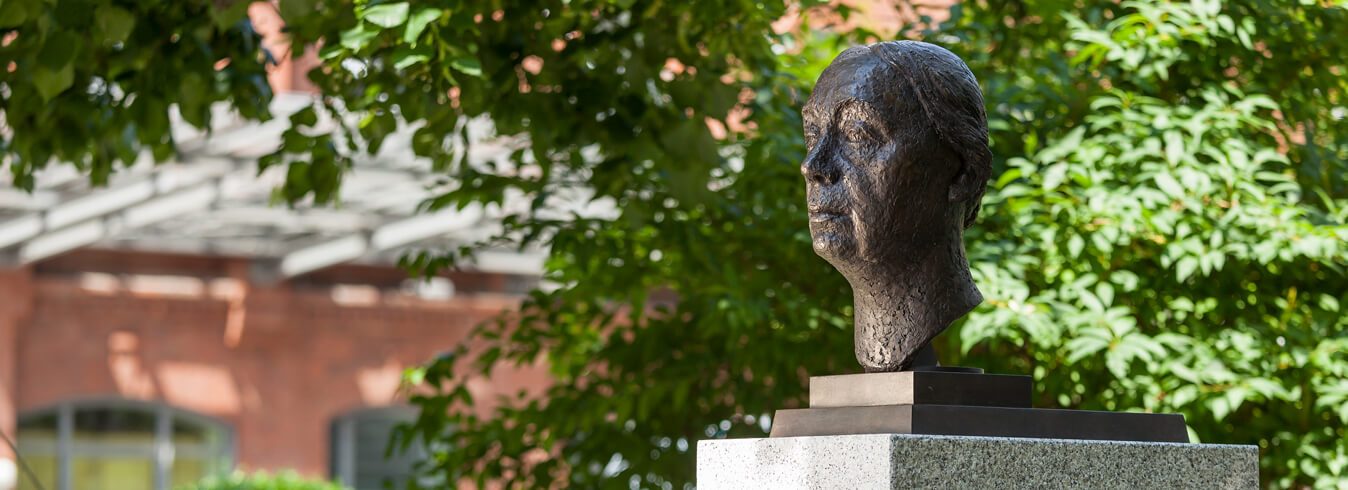
Albrecht Haushofer
January 7, 1903 – April 23, 1945
Albrecht Haushofer was a resistance fighter during national socialism. He was working as a geographer, diplomat and writer. During his time as a professor for political geography and geopolitics, he identified Hitler’s aggressive foreign policy as a great threat to the European peace but failed to have a positive impact. In his literary works, he critizised Germany’s political path in a relatively subtle way. Being labeled an enemy of the Hitler regime, he was incarcerated in the Lehrter prison, where he wrote the „Moabite Sonette“ – the most significant literary work of the german resistance movement. Just months before the liberation of Berlin, he was shot during a prison march to the Prinz-Albrecht-Palais. Moments later, his brother found the dead body, still holding the sonnets in his hands.
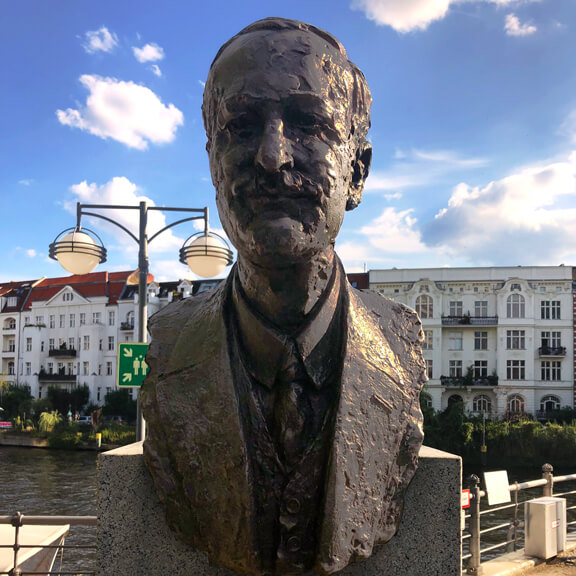

Georg Elser
January 4, 1903 – April 9, 1945
“Ich wollte ja auch durch meine Tat ein noch größeres Blutvergießen verhindern.”
Georg Elser was a resistance fighter against national socialism. He was convinced that only the death of Hitler would prevent a catastrophic world war. On November 8 1939, he failed at an bombing attempt on Hitler in Munich’s Bürgerbräukeller. With great perserverance, he had started preparing the bombing attempt a year earlier in the autumn of 1938. The worker from Württemberg, was the first one in history to get that close to killing Hitler. This monument of Georg Elser was built as the first one in all of Germany.
Ludwig Mies
van der Rohe
March 27, 1886 – August 17, 1969
“Es ist eine natürliche, menschliche Art, nicht nur auf Zweckmäßiges zu sehen, sondern auch Schönes zu suchen und zu lieben.”
Ludwig Mies van der Rohe is considered one of the most influential architects of the modern movement. He left a permanent impression with his minimalistic ideas all over the world – always following his motto: „more is less“. One of his basic principles, being that beauty and functional modernism are compatible, still to this day have a tremendous impact on today’s architecture and society.
“Baukunst wurzelt in ihren einfachsten Gestaltungen ganz im Zweckhaften.”

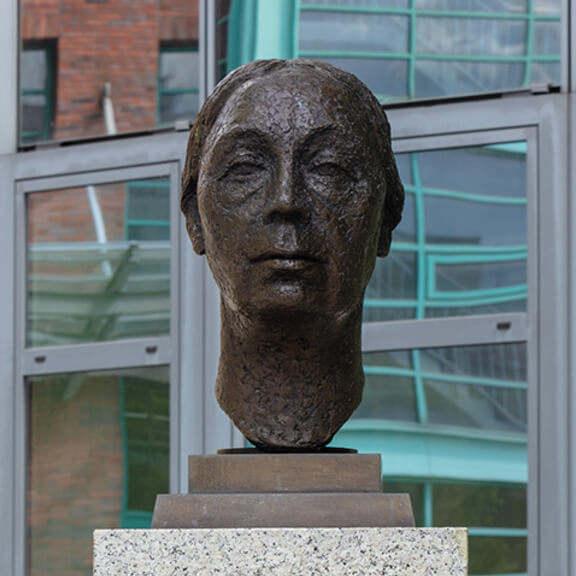
Käthe Kollwitz
July 8, 1867 – April 22, 1945
“Ich will wirken in dieser Zeit, in der die Menschen so ratlos und hilfsbedürftig sind.”
Käthe Kollwitz is regarded as one of the most significant artists of Germany of the 20th century. Most of her works covered the topics of pain, farewell and worry – typical for the destiny of her generation – the immense misery triggered by two world wars. Her „Nie wieder Krieg“ poster was one of the main icons of the peace movement of the 1920s. After 1945, she rose to fame as the symbolic figure for pacifism in the Federal Republic of Germany as well as the DDR. At the „Zentrale Gedenkstätte der Bundesrepublik Deutschland für die Opfer des Krieges und der Gewaltherrschaft“ in der Neuen Wache, one can view her monument „Mutter mit dem toten Sohn“.
“Nie habe ich eine Arbeit kalt gemacht, sondern immer gewissermaßen mit meinem Blut. Das müssen die, die sie sehen, spüren.”
Walther Rathenau
September 29, 1867 – June 24, 1922
“Mechanisierung verleiht dem irdischen Handeln eine Richtungskomponente ins Ungeistige.”
Walther Rathenau was foreign minister of the „Weimarer Republik“, industrialist and writer. He was the managing director of the electricity company „AEG“ – the company his father had founded. He was known as a critic of contemporary culture and was looking for answers to the problems of the industrial society. In his role as a politician, he was responsible for the “Repallo Treaty of 1922”, between the „Weimarer Republik“ and soviet russia. The deal included, that no reparations had to be paid. Only few months later, he was murdered by right-wing extremists while on his way to the Federal Foreign Office.
“Ich will Selbstbestimmung, selbstverdientes Geschick und Freiheit.”

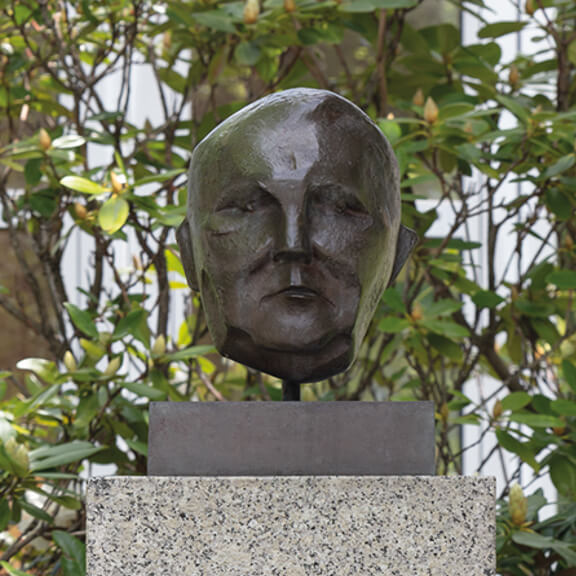
Ludwig Erhard
February 4, 1897 – May 5, 1977
“Die Arbeit ist und bleibt die Grundlage des Wohlstandes.”
Ludwig Erhard was an economist, significant politician of the young federal republic and eventually second german chancellor after Konrad Adenauer. In his role as the Federal Minister of Economics, he had a huge impact on the development of the social market economy in Germany. He is considered to be the inventor of the german model of economics: making entrepreneurial development and social justice compatible. He is also often referred to as the father of the „German economic miracle“. The principle of his book „Prosperity for All“, was, to allow as much prosperity as possible to a huge social class.
“Eine freiheitliche Wirtschaftsordnung kann auf die Dauer nur dann bestehen, wenn und solange auch im sozialen Leben der Nation ein Höchstmaß an Freiheit, an privater Initiative und Selbstvorsorge gewährleistet ist.”
Konrad Zuse
June 22, 1910 – December 18, 1995
“Durch die Maschine wird dem Ingenieur die mechanische Rechenarbeit nicht nur abgenommen, sondern ihr Umfang kann enorm gesteigert werden.”
Konrad Zuse was an engineer, inventor and leading pioneer of the computing technology. At the age of 25 he developed a theoretical model for a calculating machine, which could facilitate the computing work significantly and improve the performance to a huge extent. In 1941 he developed the „Z3“, which is considered to be the first functioning computer in the world, and laid grounds for today’s computer technology.
“Praktische Anwendung finden nicht die richtigsten, sondern die einfachsten Theorien.”
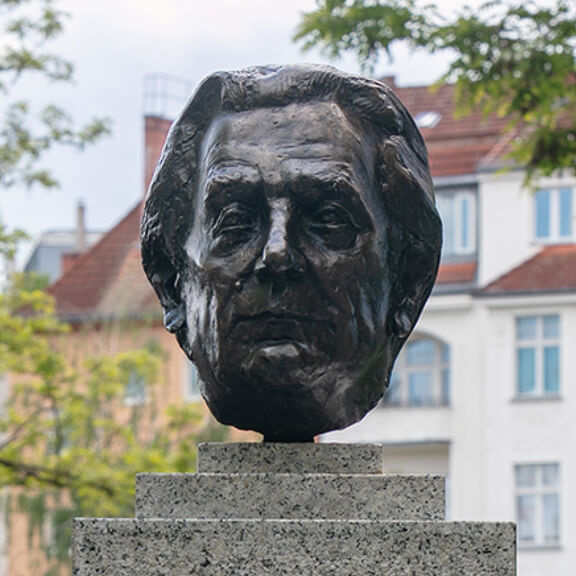

Albert Einstein
March 14, 1879 – April 18, 1955
“Ich habe keine besondere Begabung, sondern bin nur leidenschaftlich neugierig.”
Albert Einstein was a theoretical physicist and is considered to be one of the most significant scientists of all time. His theory of relativity helped him rise to fame all over the world. In 1921, he was awarded the Nobel Prize in Physics. Albert Einstein is regarded as a genius and the ultimate embodiment of a scientist. He used his extraordinary popularity in his fight against the national socialist regime and demonstrated great dedication for world peace.
“Probleme kann man niemals mit derselben Denkweise lösen, durch die sie entstanden sind.”
Thomas Mann
June 6, 1875 – August 12, 1955
“Der lebenswidrige Missbrauch, die reaktionäre Ausbeutung antiliberaler Ideen kann nicht siegreich sein.”
Thomas Mann is considered one of the most important german writers and is without a doubt the greatest novelist of the 20th century. He was awarded the nobel price for literature for his novel „Buddenbrooks“ in 1929. From early years on, he criticized the growing national socialism in germany until he was forced to emigrate to the United States of America. He became one of the leading representatives of the „other“ Germany and a journalistic fighter against the Hitler regime.
“Der Gnade, deren Deutschland so dringend bedarf, bedürfen wir alle.”

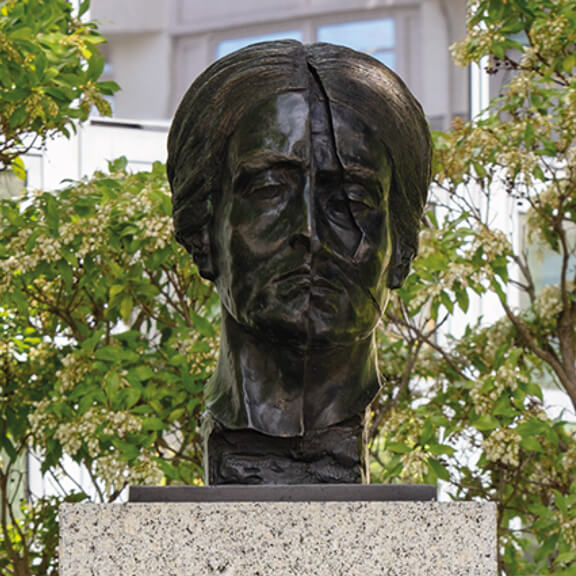
Edith Stein
October 12, 1891 – August 9, 1942
“Alles Abstrakte ist letztlich Teil eines Konkreten. Alles Tote dient letztlich dem Lebendigen. Jede abstrakte Tätigkeit steht darum letztlich im Dienst eines lebendigen Ganzen.”
Edith Stein was a philosopher and feminist of jewish descent. In 1922, she was baptized and accepted into the Catholic Church. In 1942, she was murdered in the concentration camp of Auschwitz. Within the Catholic Church, she is considered a martyr and a significant bridge builder between christians and jews. She was sainted by Pope Johannes Paul II. on October 11, 1998 in Rome.
“Für die äußere Betrachtung ist der Leib als das in die Sinne Fallende das Erste und der Geist das Letzte. Von innen her gesehen ist der selbstbewusste Geist das Erste und der Körper das Entfernteste und Letzte.”
Helmut Kohl
April 3, 1930 – June 16, 2017
“Ihr seid nicht allein, wir stehen an eurer Seite. Wir sind und bleiben eine Nation, und wir gehören zusammen.”
Helmut Kohl was the Federal Chancellor from 1982 to 1998 and is known as the „chancellor of reunification. From very early years on, he showed huge interest in the idea of a European unification. His vision was a „Europe without turnpikes“ and a harmonic cooperation between the European people in the fields of economy and culture. His masterpiece is considered to be Germany’s policy in the years of 1989 and 1990. Due to his close friendship with president George Bush and his trust in Michael Gorbatschow, he eventually achieved a reunification between east and west. During his last years as chancellor, he had a tremendous impact on the successful realization of the European Union and a common currency: the EURO.
“Ich wandle immer auf meinen eigenen, ganz und gar unverwechselbaren Spuren.”
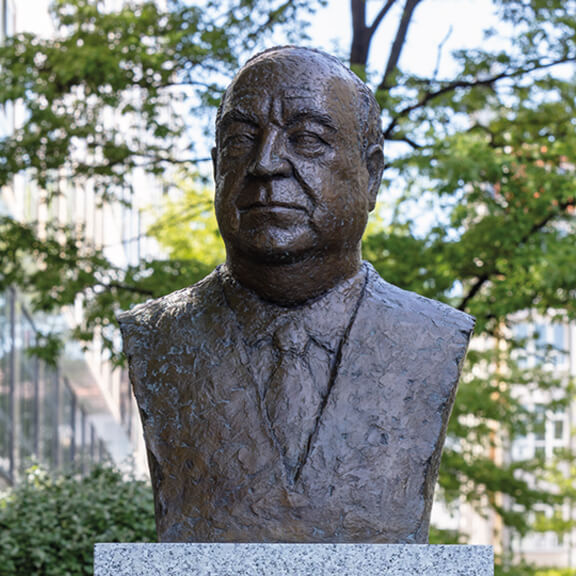

We are the people
Monument to The Peaceful Revolution
The „Ernst-Freiberger-Foundation“ wanted to remind of the peaceful revolution in the GDR and Berlin, which eventually led to the reunification between east and west. The monument „Wir sind das Volk“ was built by the artist Rolf Biebl. He had the spontaneous idea for this statue during the night of November 9th, 1989.
Berlin Wall
A piece of German history
A piece of the former berlin wall reminds of the division of Germany. The district „Moabit“ was part of the so-called „Island of West Berlin“. Today, Moabit and the Spree-Bogen area are considered to be in the centre of Berlin.









